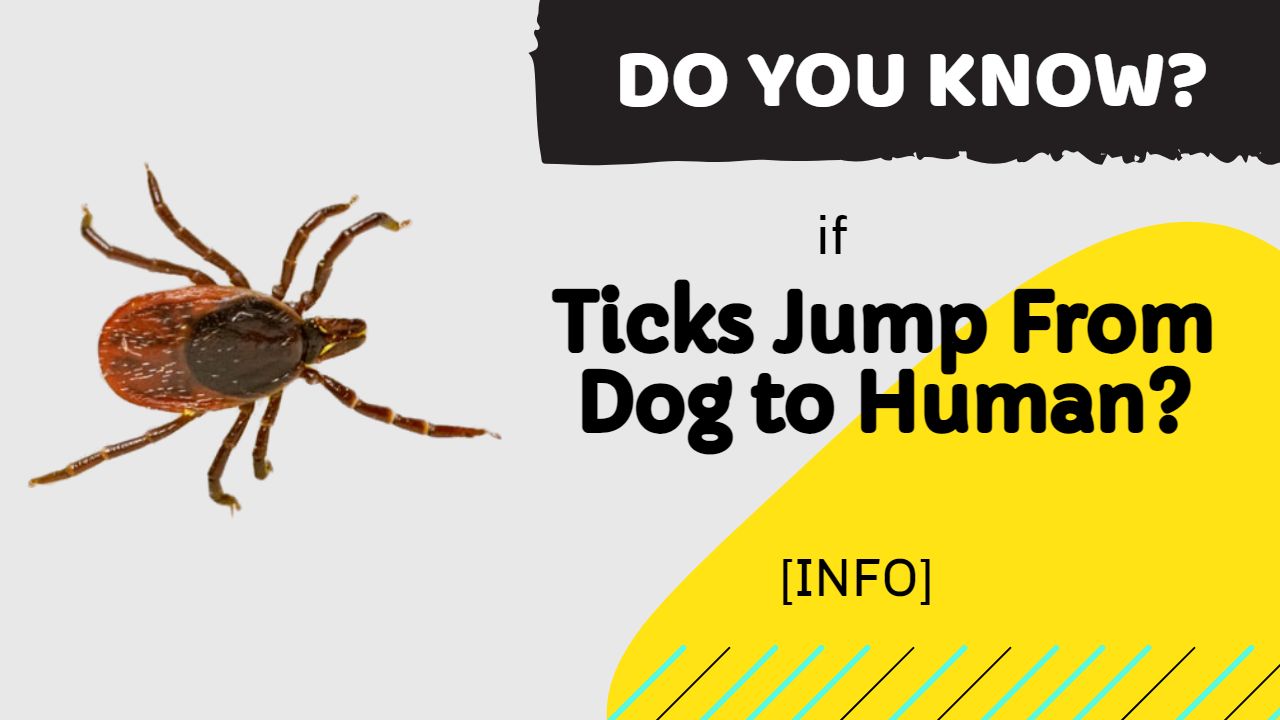The thought of ticks jumping from one host to the other is frightening. If a person has come around someone who has ticks, it could result in them being bitten by the same ticks and getting infected with Lyme disease or other tick-borne illnesses.
We have to be vigilant about preventing ticks from jumping from host to host. Use a preventative treatment like Bravecto for dogs before coming into contact with any creatures in your backyard or woods.
In this article, you will find the answer to the question that frightens many dog owners: Will ticks jump from dog to human?
Can we catch ticks from our dog?
Ticks are a major concern for dog owners. They are small, they can go unnoticed, and they can carry diseases. Ticks also pose a risk to humans who come into contact with them.
There is no evidence that ticks can be caught from dogs, but it is possible to get an infection from human-to-human contact if the person has been bitten by a tick or has had contact with someone who was bitten.
The Centers for Disease Control and Prevention recommends that you remove any ticks you find on your pet and that you wear gloves when handling them.
What are the best ways to prevent ticks in your backyard?
There are many ways to prevent ticks in your backyard. For instance, you can create a barrier of plants that will not allow the ticks to get close to humans.
You could also use insecticide and repellent for keeping pests away from your property. But you must be careful about the risks to people and animals because these compounds may be harmful, so you would not want to apply them carelessly.
How can I avoid getting a tick bite?
There are a few things you can do to avoid getting a tick bite. Ticks are most likely to be found in grassy, wooded, and bushy areas. Avoid these areas when possible.
Wear light-colored clothing so ticks can be seen more easily. Use repellents that contain DEET or permethrin on clothing and skin.
If you find a tick on your body, remove it by using tweezers to grasp the tick as close to the skin surface as possible and pull straight up with steady pressure until the mouthparts release from the skin.
Do not twist or jerk the body as this may cause the mouthparts to break off and remain in your skin which could lead to infection or other complications.
FAQs
What are the symptoms of ticks on humans?
Ticks are small, arachnid-like parasites that feed on the blood of mammals and birds. Ticks can transmit a number of diseases, including Lyme disease, Rocky Mountain spotted fever, ehrlichiosis, tularemia, and tick paralysis.
The most common symptoms of ticks on humans are:
1) Red rash or red spots
2) Swollen lymph nodes in neck or armpits
3) Headache
4) Fever
5) Fatigue
What are the possible treatments for ticks on humans?
Ticks are parasites that feed on blood and can be found in many different areas of the world. They attach themselves to animals and humans, but their bites are not always noticed. Ticks can cause a variety of diseases, including Lyme disease, Rocky Mountain spotted fever, and tularemia.
There are many ways to treat ticks on humans depending on the type of tick and how long it has been attached to the person or animal. Some treatments involve using chemicals such as pesticides or insecticides to kill ticks. Other treatments include using medications such as antibiotics or antihistamines that work against bacteria or viruses that ticks carry with them.
Can ticks infect humans with Lyme disease?
Ticks are arachnids that live in a variety of habitats. They feed on the blood of mammals, birds, and other animals. Ticks are vectors for many diseases such as Lyme disease.
Lyme disease is caused by Borrelia burgdorferi sensu lato bacteria. It is transmitted to humans through the bite of an infected tick (Ixodes scapularis). The most common sign and symptom is a circular skin rash called erythema migrans (EM). Other symptoms include flu-like symptoms, joint pain and swelling, facial paralysis, nerve pain or numbness, muscle pains and headaches.


